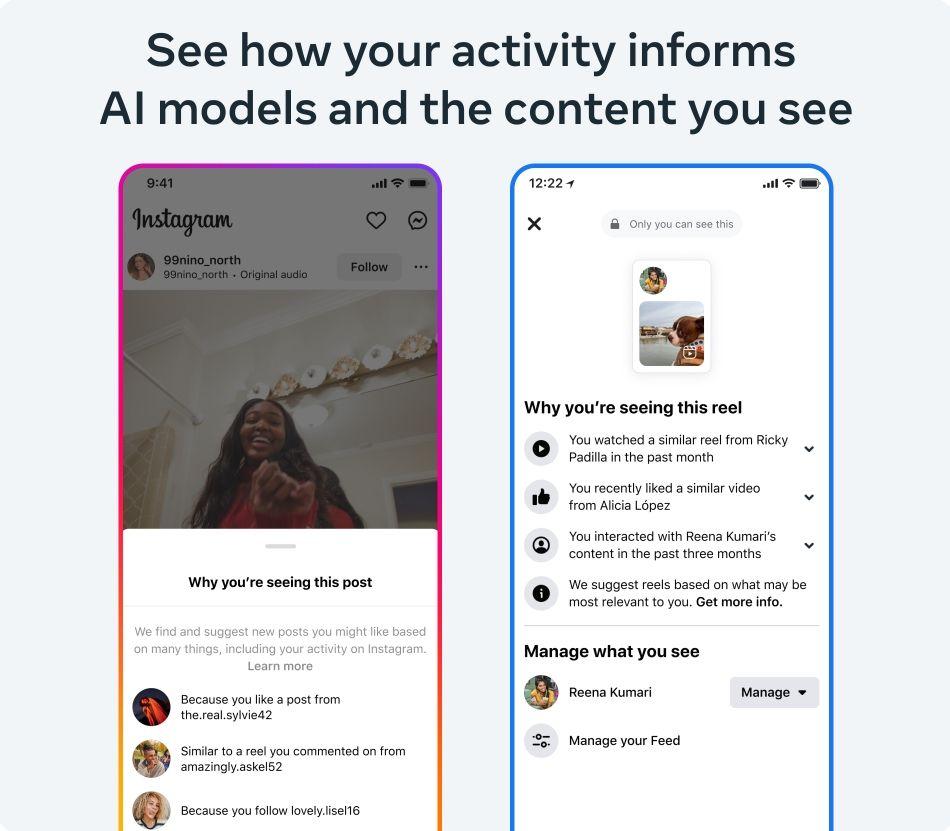You may now have a clearer understanding of how Meta’s multiple feed algorithms function and how it uses cutting-edge AI systems to match relevant material to interested viewers in-stream. This information about Meta AI and its algorithm is available on the official website.
Nick Clegg, the president of global affairs at Meta, has emphasized the value of openness of Meta AI, the company’s recommendation algorithms and how users may affect their feed depending on their activities.

Nick Clegg talked about Meta AI and algorithm
In an effort to explain how the material is suggested to Instagram and Facebook users, Meta provided a detailed analysis of the company’s social media algorithms and the future of Meta AI.
Our AI systems predict how valuable a piece of content might be to you, so we can show it to you sooner. For example, sharing a post is often an indicator that you found that post to be interesting, so predicting that you will share a post is one factor our systems take into account. As you might imagine, no single prediction is a perfect gauge of whether a post is valuable to you. So we use a wide variety of predictions in combination to get as close as possible to the right content, including some based on behavior and some based on user feedback received through surveys.
Nick Clegg, Meta’s President of Global Affairs
According to Meta, Instagram posts may now be marked with the word “Interested” if you’d like to see more of that type of material. Users may already select “Not Interested” from the three-dot menu on a post to see fewer of that type of content.
Meta Voicebox is canceled due to possible misuse
Additionally, the business said it is aiming to make Facebook’s “Show more, Show less” options “more prominent.” Currently, you may reach them via the three-dot menu on a post or a suggested Reel. It’s unclear if Meta is moving these controls to another location.

In a blog post, the business’s president of global affairs, Nick Clegg, stated that the company wants to be more open about the Meta AI systems and give people a greater choice over the material that is displayed to them.
Today, we’re building on that commitment by being more transparent around several of the AI systems that incorporate your feedback to rank content across Facebook and Instagram. These systems make it more likely that the posts you see are relevant and interesting to you. We’re also making it clearer how you can better control what you see on our apps, as well as testing new controls and making others more accessible. And we’re giving more detailed information for experts so they can better understand and analyze our systems.
Nick Clegg
Clegg noted that the business is disclosing information in the Transparency Center regarding the signals that influence a user’s suggestions, such as liking or sharing a post. The corporation, he pointed out, has neglected “to disclose signals which might make it easier for people to circumvent our defenses.”
In addition, Meta has talked about the potential for creating AI models with “tens of trillions” of parameters, which is far more than the present collection of models like ChatGPT and GPT-4. Such large models may produce a lot of data insights about a user, as my colleague Devin Coldewey pointed out in his report.
Meta Verified: Instagram blue tick is on sale, and here is how to get it
New content from Meta explains how their recommendation engine functions across several products. Additionally, it is launching a new feature called “Why am I seeing this?” on Instagram’s Explore tab, Facebook Reels, and Instagram. You will be able to comprehend why you are seeing that post in this way.
Through a new Content Library and API, which contains public posts, pages, groups, and events from Facebook as well as public posts and data from artists and corporate accounts on Instagram, Meta is now encouraging academics to examine its algorithms. Meta AI could change the future.
Featured image credit: Dima Solomin on Unsplash





